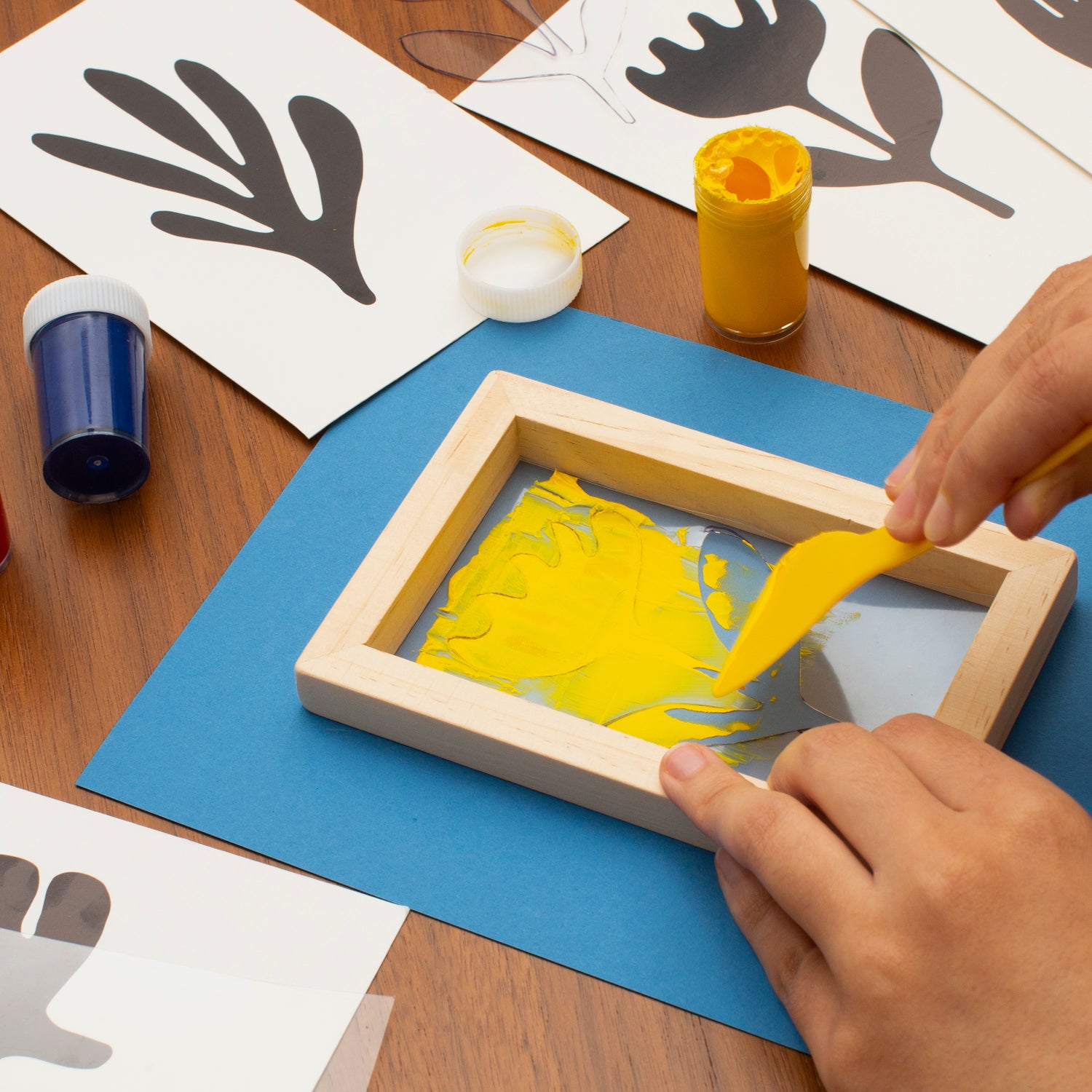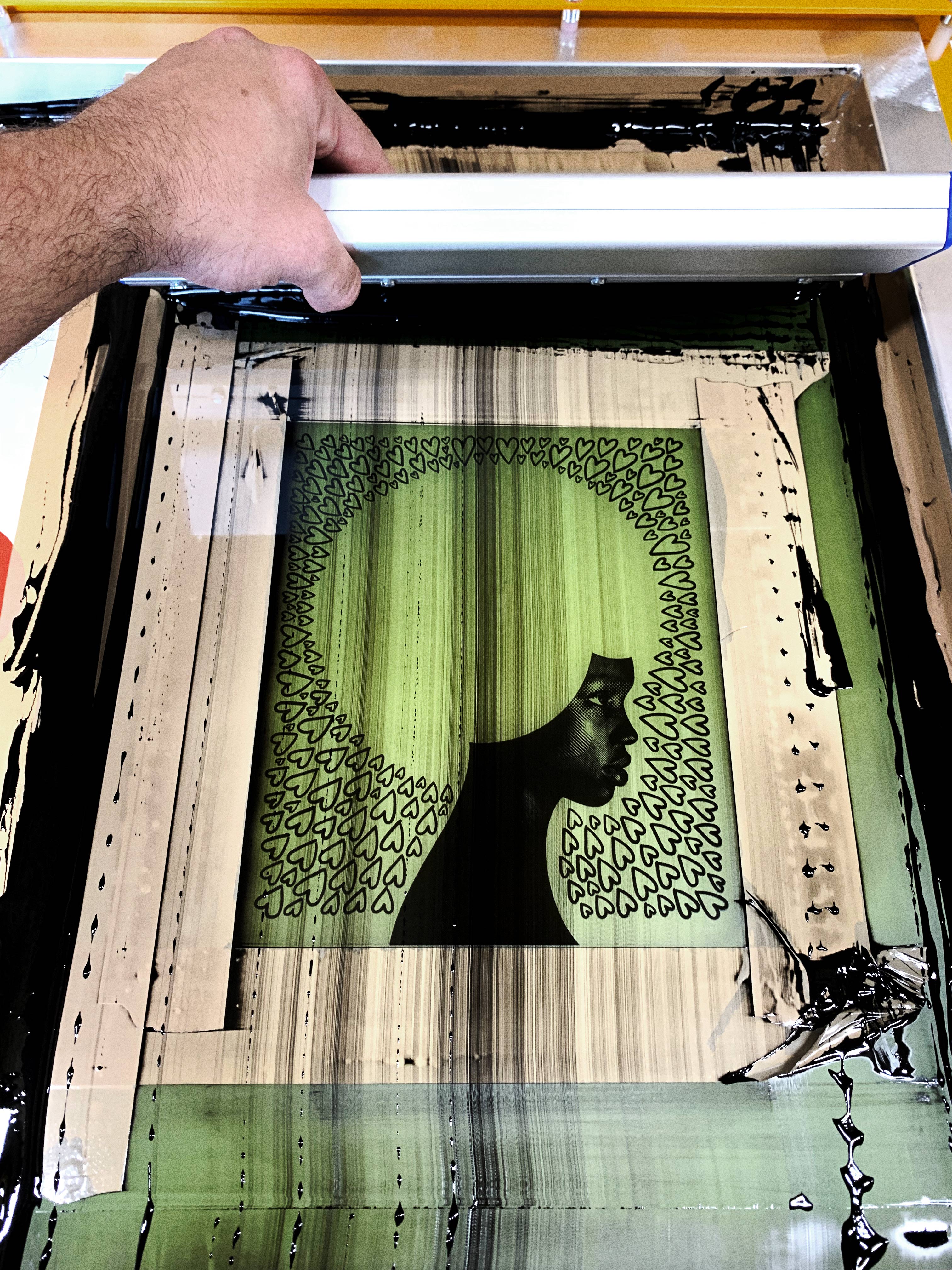ChatGPT said: How 10:9 Design Texas combines creativity and durability in screen printing
Discover the Different Sorts Of Screen Printing Techniques for Your Next Project
Screen printing supplies a varied variety of methods that can boost any type of innovative project. From traditional methods like serigraphy to contemporary technologies such as direct-to-garment printing, each approach has its one-of-a-kind benefits. Specialized choices, consisting of eco-friendly and metal inks, present much more opportunities. Comprehending these techniques can greatly affect the last end result. Nonetheless, the obstacle hinges on selecting the most appropriate approach for details needs and preferred impacts. What variables should one consider?

The Essentials of Screen Printing
Although screen printing might appear complicated, it is basically an uncomplicated procedure that includes transferring ink through a mesh screen onto various surface areas. The method begins with the creation of a pattern, which defines the layout to be printed. This stencil is connected to a mesh screen, generally constructed from polyester or nylon. When the pattern is in place, ink is related to the screen and pressed via the mesh making use of a squeegee, leading to the preferred pattern being printed on the underlying product.
Screen printing can be done on a variety of substratums, including material, plastic, and paper, making it a flexible choice for numerous jobs. The procedure permits intricate layouts and dynamic shades, making it popular in sectors such as fashion, advertising, and art. Recognizing these fundamentals outfits individuals with the fundamental expertise needed to discover advanced strategies in screen printing.
Conventional Screen Printing Techniques
Standard screen printing techniques have been utilized for centuries, maintaining the craftsmanship and creativity of this approach. This strategy utilizes a mesh screen to transfer ink onto a substratum, such as textile or paper, enabling resilient and dynamic styles. The procedure begins with producing a pattern, which obstructs particular areas of the screen to control where the ink will be used.
One preferred strategy is serigraphy, often utilized for limited editions and imaginative prints. An additional is the usage of water-based inks, which are eco-friendly and give a soft feel on fabrics - 10:9 Design LLC Company. Additionally, traditional methods can consist of hands-on printing, where artisans use ink with a squeegee, making sure precision and attention to information
These methods remain valued in the sector for their tactile quality and the one-of-a-kind structures they produce, appealing to both customers and developers that value the heritage of screen printing.
Digital Screen Printing Innovations
As the demand for faster production and modification in the printing industry has risen, digital screen printing developments have arised as a game-changer. This innovation blends standard screen printing methods with electronic processes, permitting fast prototyping and intricate styles that were previously tough to achieve. One considerable development is the intro of direct-to-garment (DTG) printing, which facilitates high-grade, full-color prints on different fabrics without the requirement for screens. Additionally, developments in ink solutions have led to green choices that keep dynamic shades while minimizing environmental influence. The use of automated systems additionally simplifies production, minimizing labor expenses and enhancing accuracy. These developments not only satisfy tiny batch orders and customized styles yet additionally allow for quicker turn-around times, making them suitable for services concentrated on conference customer demands in a busy market. Digital screen printing, as a result, represents a crucial evolution in the domain name of printing methods.
Specialized Screen Printing Methods
Discovering specialized screen printing approaches discloses a diverse selection of methods that press the borders of creative thinking and functionality in the printing industry. Among these, glow-in-the-dark inks provide an unique visual effect, making designs come alive in low-light conditions. Metal inks, known for their shimmering finish, include a touch of deluxe to published products. One more ingenious technique is discharge printing, which removes dye from the fabric rather of including ink, resulting in a soft, vintage feel. High-density printing develops an elevated structure on the surface, improving tactile engagement. Additionally, water-based inks are gaining appeal for their lively shades and decreased environmental influence. Each of these specialized methods satisfies particular layout demands, allowing artists and brand names to create standout items that resonate with their audiences. By leveraging these approaches, services can elevate their screen printing tasks to brand-new heights, ensuring remarkable perceptions.
Eco-Friendly Screen Printing Options
Environmentally friendly screen printing options are obtaining traction as the industry moves towards sustainability. Lasting ink choices and using naturally degradable materials are vital elements in reducing the ecological impact of the printing procedure. By adopting these techniques, screen printers can add to an extra sustainable future while keeping high-grade results.
Lasting Ink Options

Biodegradable Materials Usage
As the screen printing market evolves, the incorporation of naturally degradable products is coming to be significantly vital for ecologically mindful practices. Designers and makers are currently discovering inks and substratums made from natural, eco-friendly sources that decay a lot more successfully than standard equivalents. These eco-friendly alternatives minimize plastic waste and minimize environmental impact, straightening with the growing need for sustainable products.
Common examples consist of water-based inks and organic cotton fabrics, both of which reduce unsafe chemicals and promote eco-friendliness. Brand names that adopt these materials often boost their market allure, bring in customers who focus on sustainability. As recognition of environmental concerns proceeds to climb, the shift towards naturally degradable products in screen printing is likely to get energy, promoting a greener industry standard.
Selecting the Right Strategy for Your Project
Just how can one figure out one of the most appropriate screen printing strategy for a particular job? The choice pivots on a number of aspects, including the product to be printed on, the complexity of the design, and the desired production volume - 10:9 Design near me. Direct-to-garment printing is perfect for elaborate layouts with various shades, while traditional screen printing excels for larger runs of simpler graphics.
In addition, consideration of the end-use of the published item is vital. For outdoor applications, techniques that supply longevity and climate resistance, such as plastisol ink, may be preferred. On the other hand, environmentally-conscious check my site tasks might take advantage of water-based inks or eco-friendly products.
Ultimately, understanding the job's special demands enables for an educated choice, making certain both aesthetic allure and practical longevity. By assessing style intricacy, material compatibility, and manufacturing range, one can successfully pick the most suitable screen printing method to fulfill their task's goals.
Regularly Asked Questions
What Is the History of Screen Printing?
Screen printing originated in old China around 1000 ADVERTISEMENT, progressing via Japan and Europe. By the 20th century, it ended up being popular in commercial art and fashion, transforming just how designs were created and distributed globally.

Exactly how Do I Prepare Art Work for Screen Printing?
To prepare art work for screen printing, one need to guarantee high resolution, make use of an ideal color setting, produce different layers for every shade, and convert message to outlines, assuring compatibility with the printing process and wanted end result.
What Materials Are Finest for Screen Printing?
The ideal materials for screen printing include premium inks, durable displays, and ideal substrates like cotton, polyester, or blends. Furthermore, making use of appropriate emulsion and squeegees can enhance the printing process and results.
Can I Evaluate Publish in the house?
Yes, screen printing at home is possible. With the best materials, setup, and techniques, people can produce high-grade prints. Nonetheless, mindful factor to consider of office and devices is crucial for effective outcomes.

What Are Typical Errors in Screen Printing?
Usual mistakes in screen printing include incorrect direct exposure times, poor ink consistency, misalignment of screens, insufficient cleaning of materials, and ignoring to examine prints. These mistakes can compromise the quality and accuracy of the final product.
Screen printing might you could try this out appear facility, it is fundamentally a simple procedure that involves transferring ink with a mesh screen onto various surfaces. As the demand for faster manufacturing and modification in the printing sector has surged, electronic screen printing advancements have actually arised as a game-changer. Exploring specialty screen printing approaches reveals a diverse selection of methods that push the borders of creativity and functionality in the printing industry. The best materials for screen printing consist of high-quality inks, durable screens, and suitable substrates like cotton, polyester, or blends (10:9 Design Screen Printing). Typical mistakes in screen printing include improper direct exposure times, insufficient ink consistency, misalignment of displays, inadequate cleaning of products, and overlooking to test prints